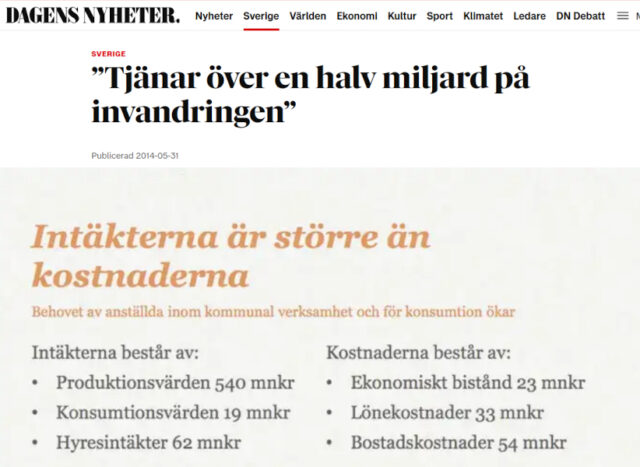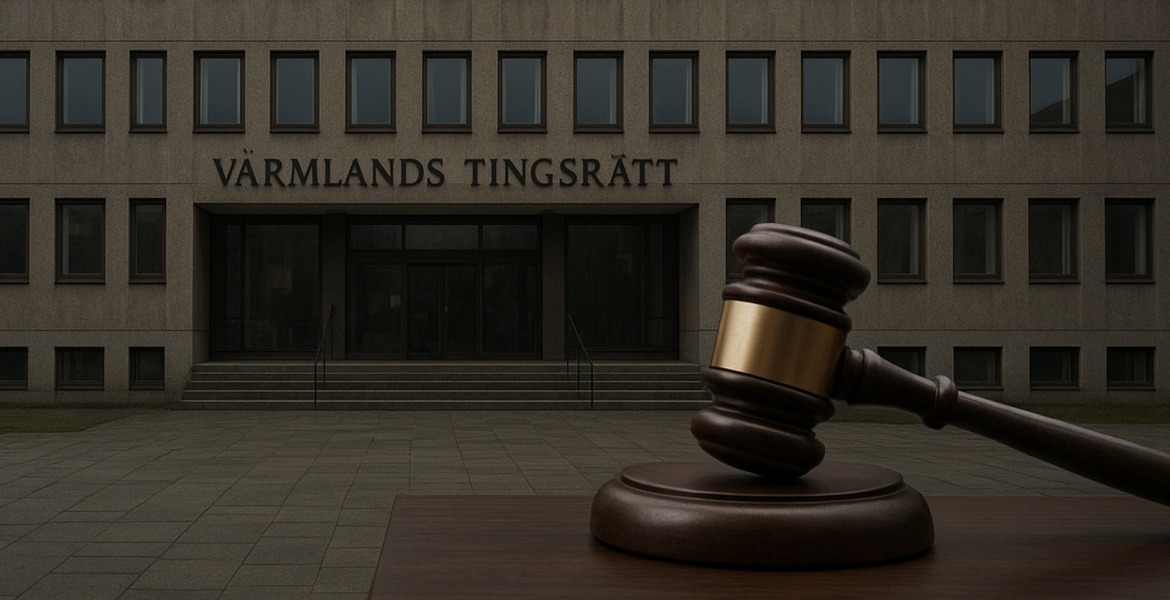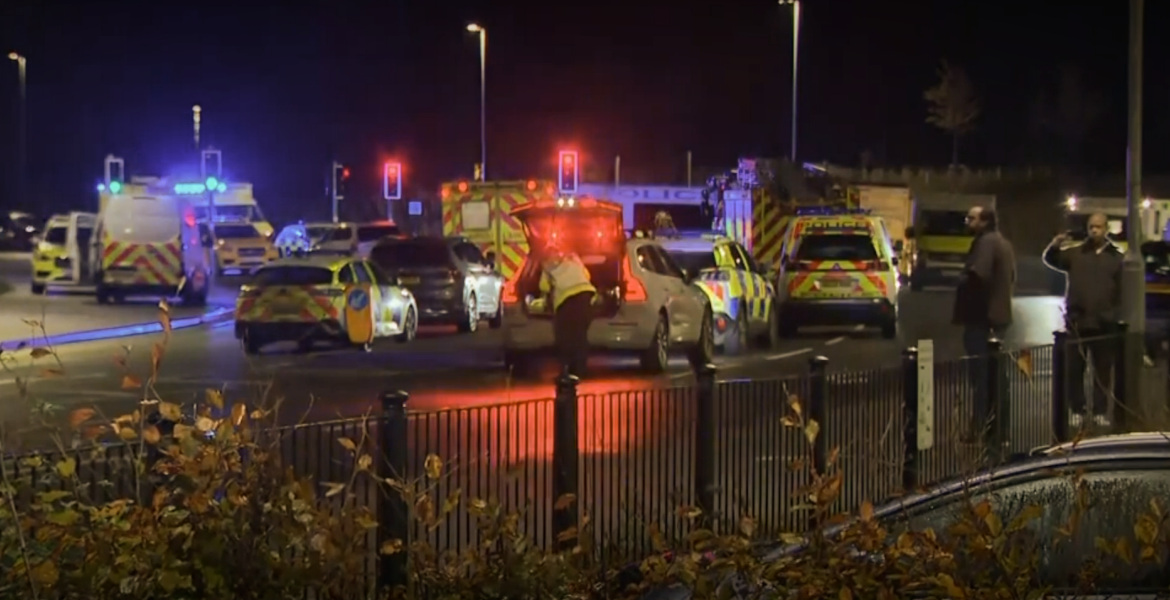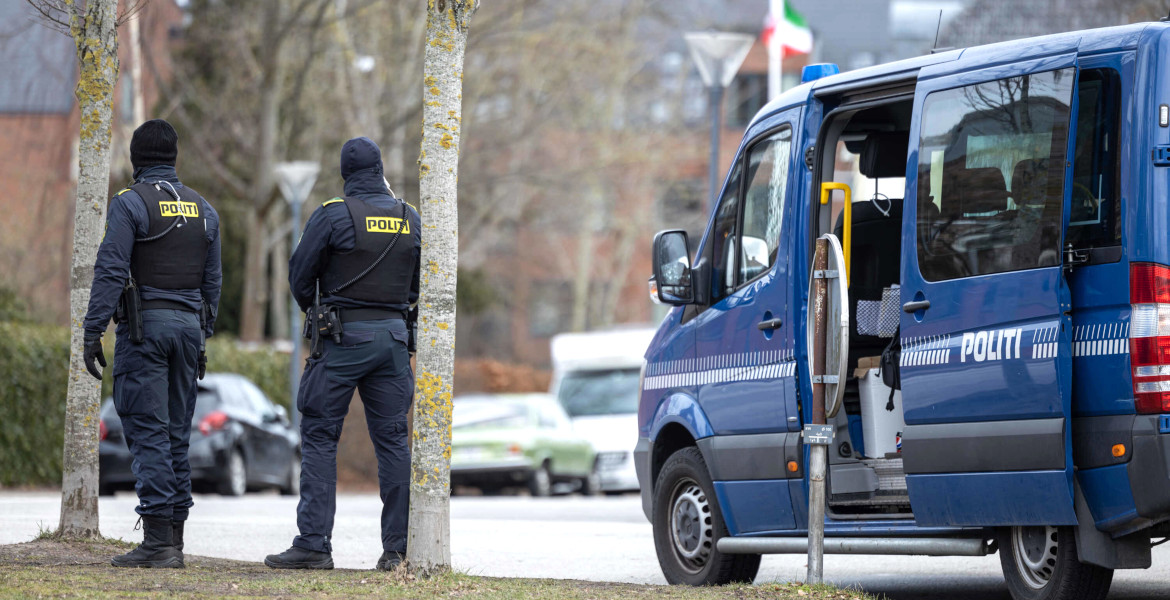Politicians and media promised that mass immigration would make Sandviken, Sweden into an economic success story. Ten years later, reality is much bleaker: half the city is now classified as an exclusion area and compared to notorious problem suburbs like Rinkeby and Tjärna Ängar.
In 2014, left-liberal media, led by the Bonnier-owned Dagens Nyheter (Sweden's largest daily newspaper), trumpeted that mass migration to Sandviken was a gigantic profitable venture that would make the entire municipality economically prosperous.
"Earns over half a billion from immigration", read DN's headline, claiming that each immigrant resident would generate €13,000 annually in revenue for the municipality.
The claims were based on figures in a report by auditing firm PwC and had been commissioned by the municipality itself.

However, the optimistic calculations were based on fantasies and wishful thinking, and within just a couple of years it became clear that the municipality's financial situation had instead become severely strained – with a budget deficit of €6 million.
— It was a fantasy scenario that was painted. The report was flawed from the beginning. How could anyone stand behind it? wondered Moderate Party opposition councilor Jonny Bratberg in 2019.
"White flight"
And since then, the situation has hardly improved. No billion-euro profits from mass immigration have materialized. Instead, the Swedish government now classifies half of Sandviken as an "exclusion area" – on the same list as notorious immigrant-dense and crime-ridden suburbs like Rinkeby (in Stockholm), Tjärna Ängar in Borlänge, and Gottsunda in Uppsala.
Surveillance cameras now sit on almost every street corner, and Emma Holmqvist, a segregation researcher at Uppsala University, notes that a large portion of the ethnically Swedish population has fled from immigrant-dense parts of Sandviken – and that other Swedes avoid moving there.
— 'White flight, white avoidance' is what we call it, says Emma Holmqvist.
— In long-term studies we can see that those with high incomes are partly driving spirals of segregation. They have housing choices that low-income earners lack. They can move away from an area with rental apartments and negative development, simply by purchasing housing.
Swedes don't want to live with immigrants
She emphasizes, however, that people – regardless of group affiliation – tend to want to live near people who are like themselves, and that this applies to both families with children and high-income earners.
— But one thing that stands out is that many with immigrant backgrounds tend to want to live with more Swedes – the opposite rarely applies to native-born Swedes, she notes.
That Swedes in Sandviken don't want to live together with immigrants is pointed out as a major and acute problem that must be solved by politicians – for example, by building more rental apartments in villa neighborhoods.
Children as integration tools
The municipality's politicians have previously attracted attention in connection with a heavily criticized integration initiative where they made the decision to forcibly relocate mainly Swedish children from villa areas to an immigrant-dense, low-performing school in an exclusion area.
The decision enraged many parents and was described as a kind of "social experiment," where children were involuntarily made into tools in politicians' integration policy project.
— This is some form of Social Democratic wet dream, where you mix up the students in yet another integration project. You take an A-school and exchange half the students with a D-school, and then you get two C-schools instead – so everyone becomes satisfied and happy. It's completely insane, of course, commented Jonny Bratberg on the matter in Tidningen Näringslivet (a Swedish business publication).





